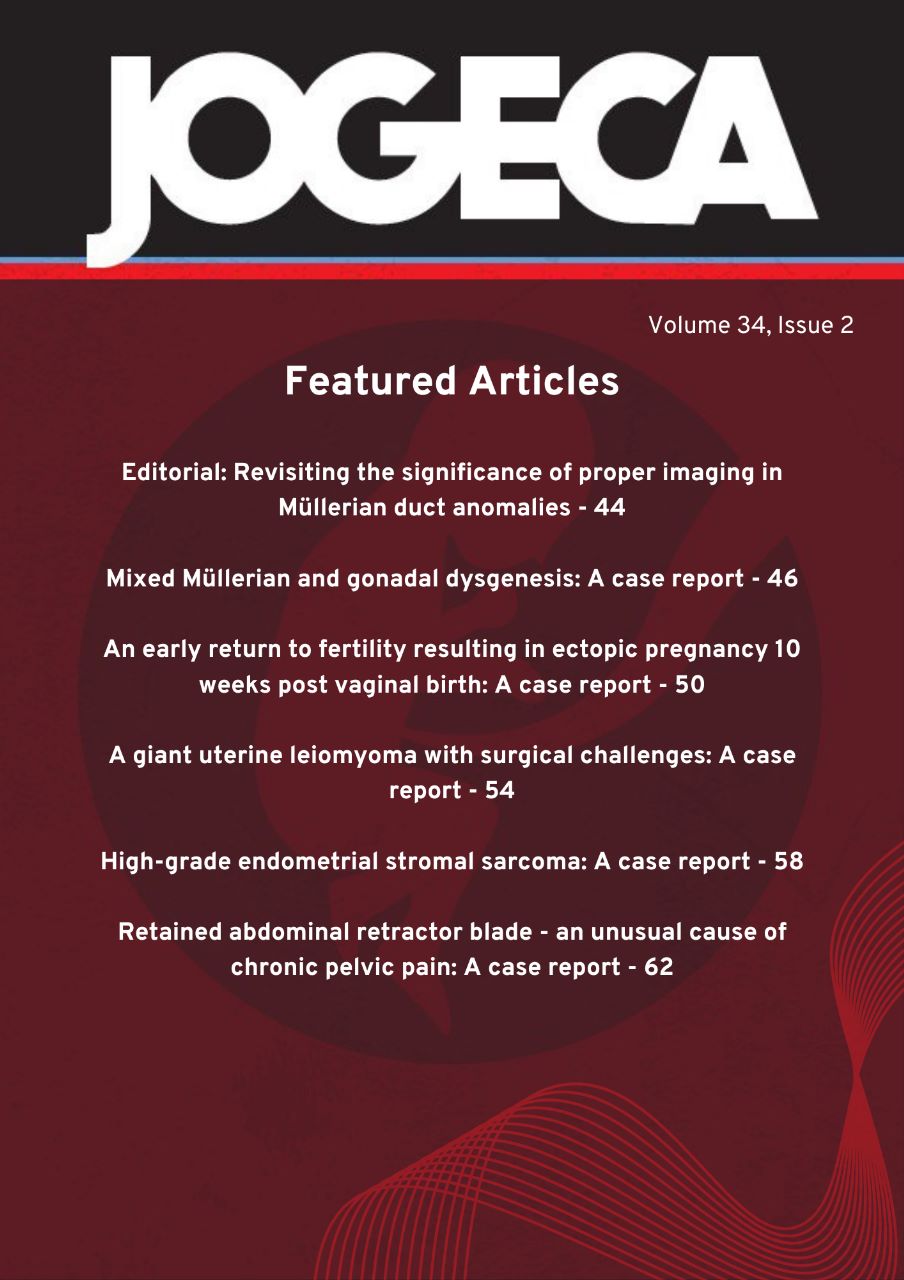Effectiveness of a group B streptococcus protocol on screening and intrapartum antibiotic prophylaxis at Kenyatta National Hospital
DOI:
https://doi.org/10.59692/jogeca.v29i1.345Keywords:
Group B streptococcus protocol, screening, antibiotic useAbstract
Background: Intrapartum Antibiotic Prophylaxis (IAP) is highly effective in preventing early-onset Group B Streptococcus (GBS) disease among infants born to colonized women. The burden of GBS at Kenyatta National Hospital (KNH) is comparable to the global prevalence yet standardized IAP guidelines have neither been developed nor implemented. This is important in averting GBS associated mortality and morbidity.
Objective: To determine if introduction of a GBS screening and IAP protocol is associated with changes in proportion of women receiving appropriate GBS screening and IAP at KNH.
Materials and methods: This was a pre and post intervention quasi-experimental study. In the pre intervention phase, clinicians providing reproductive health services were first interviewed on GBS IAP practices and then trained on the proposed GBS IAP protocol. During the post intervention phase, the clinicians were re-interviewed on GBS IAP practices. During both phases, data was extracted from the patient files to assess GBS IAP practice. Intervention comprised Continuous Medical Education (CME), posters of protocol in clinical areas and an email of the proposed protocol sent. Descriptive statistics was conducted for categorical variables and reported as proportions while continuous variables were described using measures of central tendency and dispersion (mean, mode and median). The strength of the association’s was obtained from the effect estimate and p value < 0.05 considered significant.
Results: Between 1st May 2015 and 30th November 2015, we retrieved a total of 110 patient files. Nearly half of the files for the pre intervention and post intervention met the inclusion criteria. A total of 93 of the 103 clinicians approached were interviewed; 50 at pre intervention and 43 at post intervention. The prescription of appropriate antibiotics for GBS IAP by clinicians increased from none at pre intervention to 44% at post intervention. However, none of the patients had evidence of rectovaginal swab culture or antibiotic sensitivity pattern for GBS both at pre intervention and post intervention.
Conclusion: Introduction of a GBS IAP protocol substantially and significantly increased GBS IAP but did not have effect on screening practices.
Downloads
Published
How to Cite
Issue
Section
Categories
License
Copyright (c) 2017 Authors

This work is licensed under a Creative Commons Attribution 4.0 International License.




